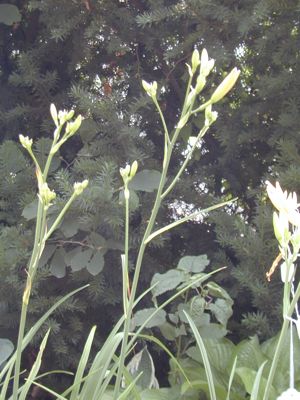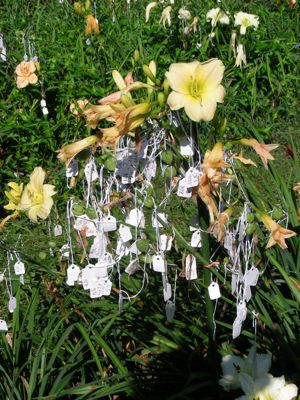Umpty Kajillion (Huben 10)

42 E 3.5, Melon w'Cream Polychrome, Dor Dip Emo
Aerial * Boston Symphony
Seedling: MH0047Q
This delightful melon-cream flower floats on tall, graceful, well-branched scapes. I usually count 6 branches (including the terminals) and 40+ buds. One year I carried a few of the spent scapes to a meeting in the winter, and was greeted by gasps: everybody wanted to know what variety produced them. You can see from the picture below how gracefully the wide branches carry the blooms so that they don't interfere.

The only real fault of Umpty Kajillion is that it wasn't what I was breeding for, it's only half way to my goal. I wanted a white with those scapes, and of course I'm breeding with Umptry Kajillion for that:





















2 comments:
May I ask a question - when you hybridize - how do you deal with bees that may "interfere" with what crosses you are trying to make? Thanks - Anya
I have a page describing how: Pollination tips and techniques.
"There are many problems that can arise in pollination. The first is insect interference, especially pollen theft by earwigs and bees. Some mornings I'd wake up, and none of the nocturnals had pollen left because the earwigs ate it. I've solved that problem two ways: by collecting pollen in the evening and by eliminating the earwigs. In the mornings, I also race against the bees to gather pollen. They generally show up at around 8AM, which gives me plenty of time to get what I want for the day. Bees might also pollinate the blooms with the wrong pollen: such bee pods are not a big problem in my yard. But the solution is simply to pollinate before the bees do. The pollen tubes grow that fast that they should only need an hour's head start. "
Post a Comment